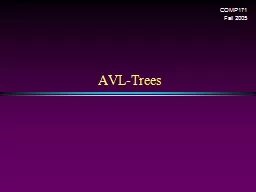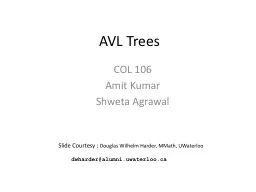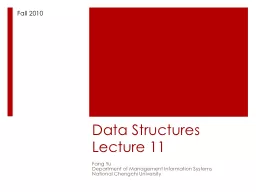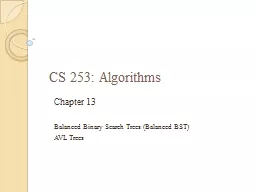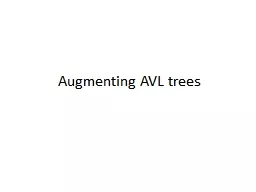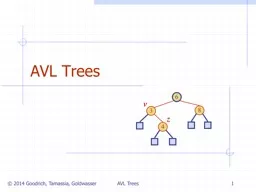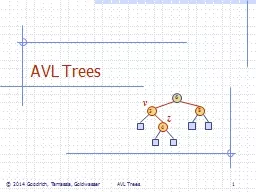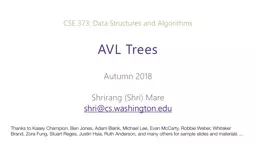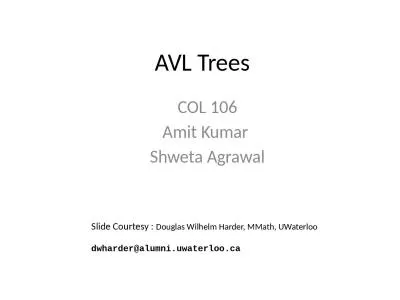PPT-AVL-Trees
Author : luanne-stotts | Published Date : 2016-03-17
COMP171 Fall 2005 Balanced binary tree The disadvantage of a binary search tree is that its height can be as large as N1 This means that the time needed to perform
Presentation Embed Code
Download Presentation
Download Presentation The PPT/PDF document "AVL-Trees" is the property of its rightful owner. Permission is granted to download and print the materials on this website for personal, non-commercial use only, and to display it on your personal computer provided you do not modify the materials and that you retain all copyright notices contained in the materials. By downloading content from our website, you accept the terms of this agreement.
AVL-Trees: Transcript
Download Rules Of Document
"AVL-Trees"The content belongs to its owner. You may download and print it for personal use, without modification, and keep all copyright notices. By downloading, you agree to these terms.
Related Documents

